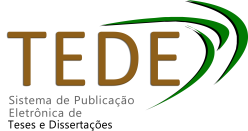| Compartilhamento |


|
Use este identificador para citar ou linkar para este item:
http://www.tede2.ufrpe.br:8080/tede2/handle/tede2/9805Registro completo de metadados
| Campo DC | Valor | Idioma |
|---|---|---|
| dc.creator | MENEZES, Marcelo Rógenes de | - |
| dc.creator.Lattes | http://lattes.cnpq.br/5530957826455150 | por |
| dc.contributor.advisor1 | PAES, Iêdo de Oliveira | - |
| dc.contributor.referee1 | AZEVEDO, Natanael Duarte de | - |
| dc.contributor.referee2 | ALMEIDA, Sherry Morgana Justino | - |
| dc.date.accessioned | 2025-10-21T17:00:13Z | - |
| dc.date.issued | 2024-03-27 | - |
| dc.identifier.citation | MENEZES, Marcelo Rógenes de. A representação literária do corpo abjeto no romance O filho de mil homens, de Valter Hugo Mãe. 2024. 77 f. Dissertação (Programa de Pós-Graduação em Estudos da Linguagem) - Universidade Federal Rural de Pernambuco, Recife. | por |
| dc.identifier.uri | http://www.tede2.ufrpe.br:8080/tede2/handle/tede2/9805 | - |
| dc.description.resumo | Este trabalho tem como escopo estudar a representação literária da abjeção, bem como uma leitura crítica do romance O filho de mil homens (2016), de Valter Hugo Mãe, na pretensão de analisar temas relacionados ao corpo. Para tanto, alicerço-me à estética da abjeção, a partir dos pressupostos de Judith Butler (2016a; 2016b), Julia Kristeva (1980) e Márcio Seligman-Silva (2005; 2008), para compreender como a personagem de Antonino é desumanizada no texto literário de Mãe, o que ocasiona o questionamento da própria condição humana. Recorro, também, à estética da crueldade, embasado por Antonin Artaud (2006), Clément Rosset (2002) e Renato Gomes (2004), na perspectiva de entender como a crueldade expressa na prosa não é tão somente através do “sangue verdadeiro”. Analiso, ainda, os aspectos concernentes ao cronotopo – espacialidade e temporalidade – com base nos pressupostos teórico-críticos, principalmente, de Mikhail Bakhtin (1992, 1993), além de refletir sobre a consonância acerca da topoanálise, de Gaston Bachelard (1974), e do simbolismo, de Jean Chevalier & Alain Gheerbrant (1999), a respeito da abjeção e da inter-relação entre o cronotopo e o estatuto ficcional da prosa valteriana enquanto elementos basilares e fundamentais para a ‘sutura’ dos textos literário e teórico. Ao final do trabalho, elenco Richard Miskolci (2017) e Judith Butler (2016a) para compreender questões como sexualidade, ordem social e insubordinação através da teoria queer. | por |
| dc.description.abstract | This literary work has within its scope study the representation of abjection literature, as well as a critical reading on the romance “O filho de mil homens” (2016), by Valter Hugo Mãe, in the pretense of analyzing the themes related to the body of the literary work. Therefore, I premise myself on the esthetic of abjection, established by the purports of Judith Butler (2016a; 2016b), Julia Kristeva (1980) e Márcio Seligman-Silva (2005; 2008), to comprehend how the character of Antonino is dehumanized on the literary work of Mãe, which leds to the questioning of the human condition itself, founded on, moreover, to the esthetic of cruelty, based on Antonin Artaud (2006), Clément Rosset (2002) and Renato Gomes (2004), on the perspective of understanding how the cruelty expressed on the prose isn’t as only by true “bloodshed”. I infer, as well, the aspects regarding to the chronostope – spatiality and temporality – based on the theoric-critical presupposition, primarily, of Mikhail Bakhtin (1992, 1993), in addition to reflecting on te consonance about the topoanalysis, of Gaston Bachelard (1974), and the symbolism, of Jean Chevalier & Alain Gheerbrant (1999), regarding the abjection and the inter-relationship between the chronostope and the ficcional statute of the valterian prose as basic elements and fundamental to the "suture" of the literary and theoretical texts. I list Richard Miskolci (2017) and Judith Bluter (2016a) to comprehend questions such as sexuality, social order and insubordination through the queer theory. | eng |
| dc.description.provenance | Submitted by Mario BC (mario@bc.ufrpe.br) on 2025-10-21T17:00:13Z No. of bitstreams: 1 Marcelo Rogenes de Menezes.pdf: 627639 bytes, checksum: 7017a9fc33b4822bd9d500bf1cabf270 (MD5) | eng |
| dc.description.provenance | Made available in DSpace on 2025-10-21T17:00:13Z (GMT). No. of bitstreams: 1 Marcelo Rogenes de Menezes.pdf: 627639 bytes, checksum: 7017a9fc33b4822bd9d500bf1cabf270 (MD5) Previous issue date: 2024-03-27 | eng |
| dc.format | application/pdf | * |
| dc.language | por | por |
| dc.publisher | Universidade Federal Rural de Pernambuco | por |
| dc.publisher.department | Unidade Acadêmica de Educação a Distância e Tecnologia | por |
| dc.publisher.country | Brasil | por |
| dc.publisher.initials | UFRPE | por |
| dc.publisher.program | Programa de Pós-Graduação em Estudos da Linguagem | por |
| dc.rights | Acesso Aberto | por |
| dc.subject | Análise de obra literária | por |
| dc.subject | Representação literária | por |
| dc.subject | Romance (gênero literário) | por |
| dc.subject | Teoria queer | por |
| dc.subject.cnpq | CIENCIAS HUMANAS::EDUCACAO | por |
| dc.title | A representação literária do corpo abjeto no romance O filho de mil homens, de Valter Hugo Mãe | por |
| dc.type | Dissertação | por |
| Aparece nas coleções: | Mestrado em Estudos da Linguagem | |
Arquivos associados a este item:
| Arquivo | Descrição | Tamanho | Formato | |
|---|---|---|---|---|
| Marcelo Rogenes de Menezes.pdf | Documento principal | 612,93 kB | Adobe PDF | Baixar/Abrir Pré-Visualizar |
Os itens no repositório estão protegidos por copyright, com todos os direitos reservados, salvo quando é indicado o contrário.




